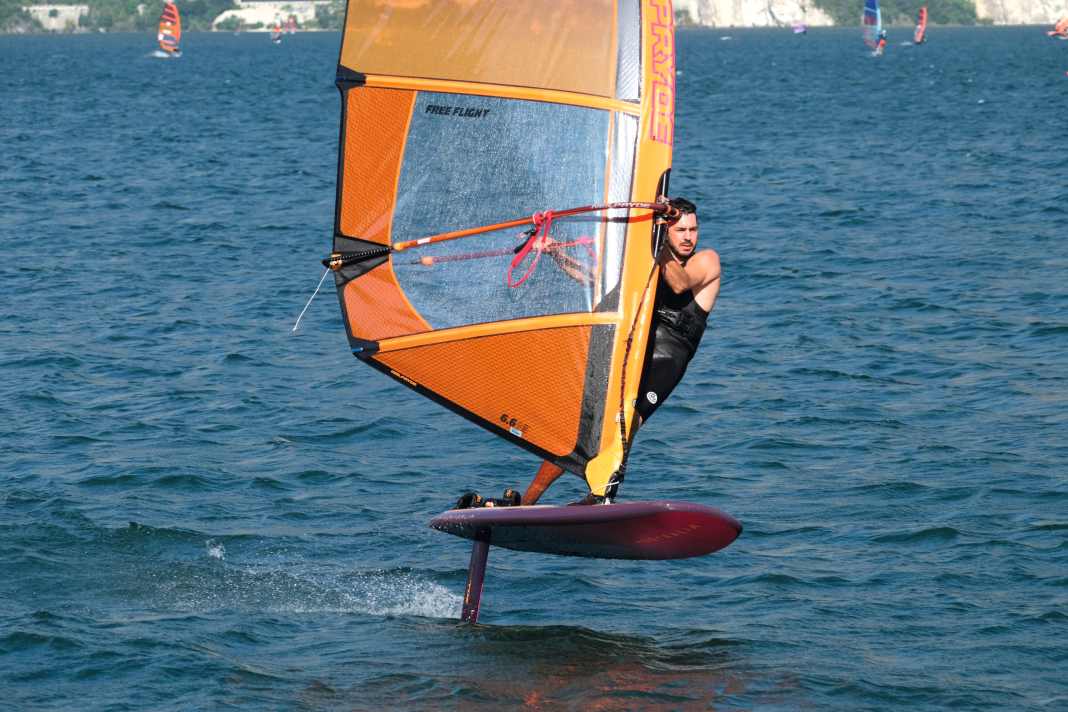Test freeride foils 2024: JP-Australia FreeFoil 130 and NeilPryde GlideWind HP 1300 - sophisticated all-rounder
Surf Testteam
· 23.10.2024






The FreeFoil was developed as a hybrid for sails and wings, so both a tuttle box and the double US box are installed for foil mounting and the deck is covered with loop plugs for both disciplines - which certainly contributes to the high weight. The underwater hull looks quite unspectacular with its planing surface like a fin board and without a cut-out. The edges are beefier than on fin freeride boards, especially in front of the mast track. The foil shimmers in a variety of colours, some with a golden sheen, the tuttle head is screwed on and is also available as a powerbox adapter. The rear mast edge looks quite sharp-edged, as do the pointed ends of the back wing. The fuselage measures just 83 centimetres and is therefore very short, with the front wing positioned far forward and the stabiliser comparatively close to the mast.
On the water
Fortunately, the board weight plays a lesser role in foiling than in fin surfing. This means that the heavy impression is only felt when carrying the board and is quickly forgotten on the water. With a width of 77 centimetres, the board is particularly stable and easy to pump, and the wing quickly produces a lot of lift that needs to be controlled. The rear foot has to move swiftly into the strap and keep the board level and the nose up with constant pressure. Even with the two included spacers on the stabiliser - for more angle of attack and therefore more lift - this characteristic could not be positively changed. The short fuselage and the small back wing ensure agility when pumping or wagging. More inertia would be desirable for windsurfing. Gusts or even minor load changes quickly create a dolphin movement, which should be a real challenge for foil beginners. In the up/down axis, the system lacks the desirable inherent stability. The standing position in the loops is comfortable, but if you leave it at the back - for jibing, for example - you have to quickly apply pressure far back on the tail again, otherwise it will go down early. The impact on the water is also quite rough, albeit more muted than on a pure windsurf board with a foil option. However, the foil boards from Duotone, Severne and Starboard take such impacts a little better.
Surf summary of the JP-Australia FreeFoil 130 and NeilPryde GlideWind HP 1300
The NeilPryde foil in particular has been overtaken by newer concepts and appears demanding and less inherently stable. It requires constant pressure on the tail, similar to a fin board. This also makes jibes noticeably more difficult. The good speed with low drag and the board's suitability for wing foiling remain as plus points.
Can be used for sails and wings
Demanding, quite unstable flight attitude
Sharp back wing, high board weight
Technical data JP-Australia FreeFoil 130 and NeilPryde GlideWind HP 1300
- Weight board: 9.8 kg*
- Foil weight: 4.8 kg*
- Foil mast: 85 cm*
- Fuselage: 83 cm*
- Front wing: 80.5 cm*
- Stabiliser: 38.5 cm*
- Price Board: 2399 Euro
- Price Foil: 1348 Euro
- Info: jp-australia.com & neilpryde.com
*surf measurement
